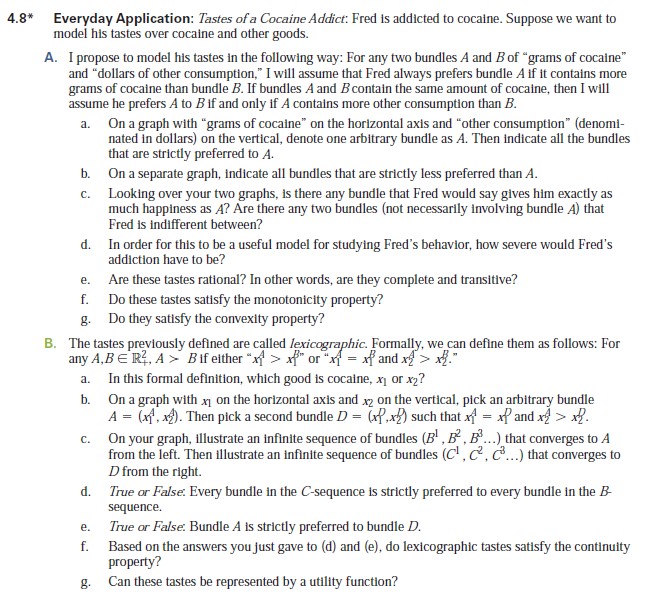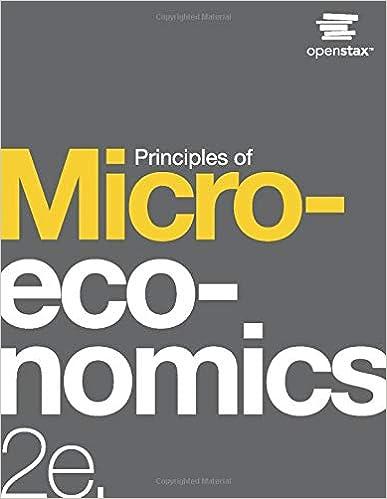Please answer
4.8* Everyday Application: Tastes of a Cocaine Addict: Fred is addicted to cocaine. Suppose we want to model his tastes over cocaine and other goods. A. I propose to model his tastes in the following way: For any two bundles A and B of "grams of cocaine" and "dollars of other consumption," I will assume that Fred always prefers bundle A if it contains more grams of cocaine than bundle B. If bundles A and B contain the same amount of cocaine, then I will assume he prefers A to B if and only if A contains more other consumption than B. a. On a graph with "grams of cocaine" on the horizontal axis and "other consumption" (denomi- nated in dollars) on the vertical, denote one arbitrary bundle as A. Then indicate all the bundles that are strictly preferred to A. b. On a separate graph, indicate all bundles that are strictly less preferred than A. C. Looking over your two graphs, is there any bundle that Fred would say gives him exactly as much happiness as A? Are there any two bundles (not necessarily involving bundle A) that Fred is indifferent between? d. In order for this to be a useful model for studying Fred's behavior, how severe would Fred's addiction have to be? e. Are these tastes rational? In other words, are they complete and transitive? f. Do these tastes satisfy the monotonicity property? g. Do they satisfy the convexity property? B. The tastes previously defined are called lexicographic. Formally, we can define them as follows: For any A, BER, A > Bif either "x > of" or "xi = of and x/ > x/." a. In this formal definition, which good is cocaine, x or x2? b. On a graph with x on the horizontal axis and a2 on the vertical, pick an arbitrary bundle A = (x. x). Then pick a second bundle D = (x,x2) such that xf = x and x/ > x?. . On your graph, illustrate an infinite sequence of bundles (B) , B- , B'...) that converges to A from the left. Then illustrate an infinite sequence of bundles (C] , C, C'...) that converges to D from the right. d. True or False: Every bundle in the C-sequence is strictly preferred to every bundle in the B- sequence. e. True or False: Bundle A is strictly preferred to bundle D. f. Based on the answers you just gave to (d) and (e), do lexicographic tastes satisfy the continuity property? g. Can these tastes be represented by a utility function







